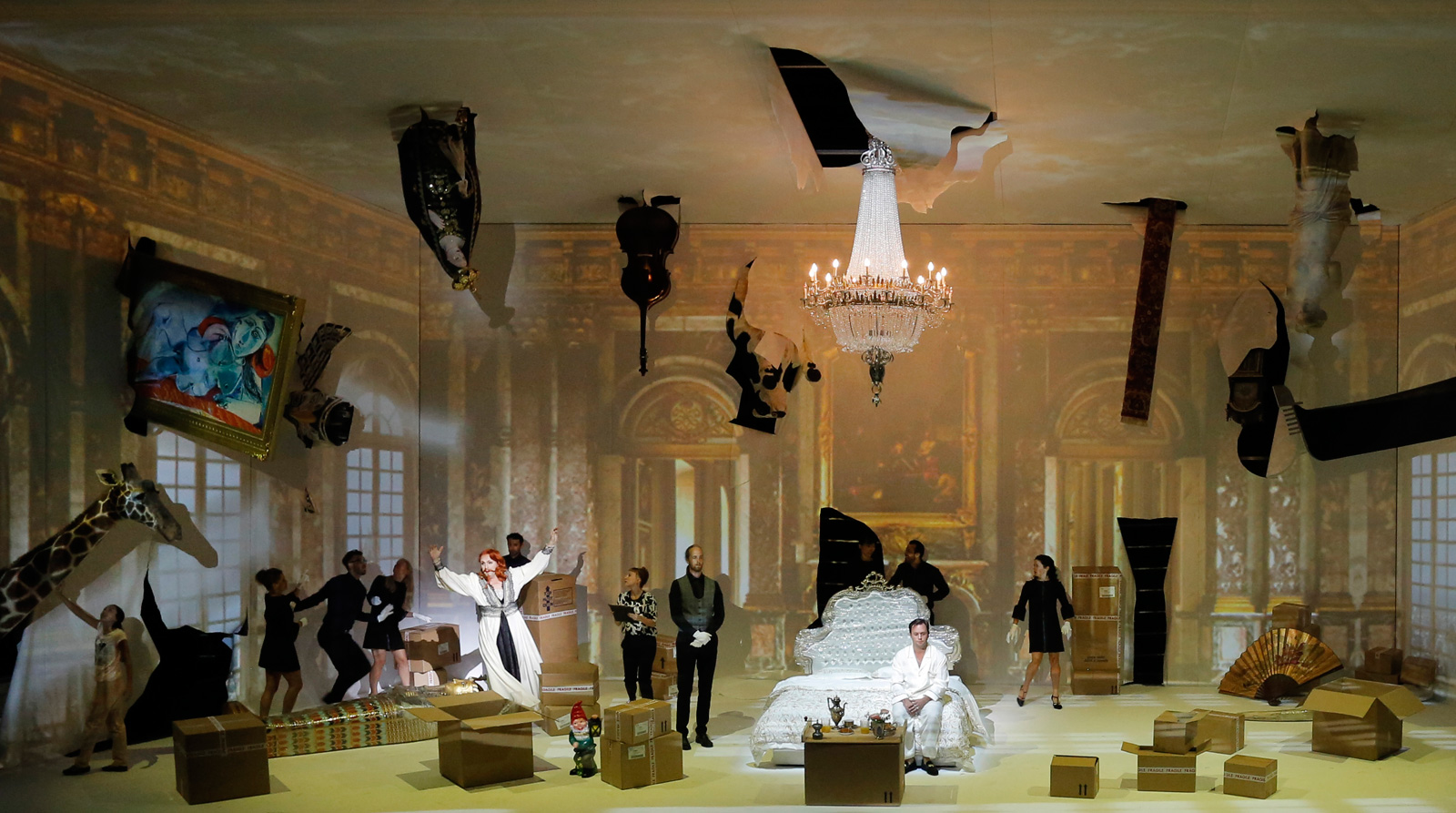Festival International d’Art Lyrique d’Aix-en-Provence
A month-long event in the south of France, making opera relevant and available to new audiences

Festival International d’Art Lyrique d’Aix-en-Provence, or Festival d’Aix, isn’t your average collection of acts in the already crowded festival season. Though, in its 69th year, it’s certainly not new. Set in various theaters (one of which is outdoors) across Aix-en-Provence, it’s also not a hub of overcrowding, Instagramming or raucous behavior. Rather, Festival d’Aix demonstrates the sheer power of an ever-relevant art form: opera. Without being beholden to private investors (as it’s state funded) and with a mission to reach and employ youth, the festival’s modern productions and forward-thinking advancements on classics simply feel fresh. There also might not be any other festival where one can see five operas in four days—an immersion that truly conveys the medium’s nuance, drama and charm. In conjunction with two off-shoots—the Académie and Aix en Juin—the festival hosts more than 35 events, five new opera productions, classes and tours, all in the midst of the glowing south of France summer. For anyone unfamiliar with (or even a little afraid of) opera, or who questions its majesty or accessibility, there’s no better place to begin.

Programming matters most. In the world of opera, there are some names most likely everyone has heard, “Carmen” and “Don Giovanni” being two examples. There are also those less familiar, like Igor Stravinsky’s 1951 tragedy “The Rake’s Progress” or the Italian baroque piece “Erismena,” made by Francesco Cavalli back in 1655. And there are new commissions spun from old stories, take for instance “Pinocchio.” These five operas (and a sixth done in concert) make up the bill at this year’s festival and act as entertainment and education. Nobody need enter as an expert or even a linguist; storytelling guides every guest.

This year, “Carmen” was set in a modern day psychological ward—with its male lead Don Jose living the opera as a form of emotional treatment. This concept offered contemporary relevance and a zany veneer yielding to extreme emotionalism. As for “Don Giovanni,” it was still set in the age of libertinism, but the hyper-modern stage design demonstrated poetic and creative advancements in mise-en-scène. This is what Festival d’Aix excels at: finding elements of an area of opera that can bend and stretch to lure present-day imaginations. From a world premiere of a shockingly dark rendition of “Pinocchio” to a relatable take on idle hands in “The Rake’s Progress,” opera opens its doors to a new generation.

Bernard Foccroulle, directeur général of Festival d’Aix and an acclaimed organist who has recorded almost 30 albums, explains to CH, “We have been developing projects with many goals—and with a vision of what the festival should contribute toward opera.” The question of the audience is one of the biggest he acknowledges and offers up some of their strategies. “We open the last rehearsals for free to schools and offer tickets for free to children under 18 when their parents buy tickets for evening performances,” he begins. “If we look further out, will this mean that those kids come back? It’s complicated. If we analyze the situation, there are many barriers. We are trying to break the circle in many places at the same time.” In another financial move, young people under 30 pay only nine euro for good seats. But longterm strategy means addressing diversity, ownership of future projects and engaging in vast community outreach. Foccroulle spends much time thinking about what opera can be—and for who. He has developed a longterm program with ideas ranging from partnerships to economy of production scale.

“We have a design scheme for young people, called Opera Un,” continues Emilie Delorme, Director of the Académie Européenne de Musique or the Académie of the Festival d’Aix-en-Provence. She’s also an artistic director of the festival as well. “There are 100 to 200 people at opening nights. It’s part of a one year program.” Here, children meet the artists but also engage in master classes with working artists—this year including electronic composer Matthew Herbert. The public funding also enables Aix en Juin, a month long extension of the festival where events are hosted outside of Aix. People can buy a pass for 60 events at Aix en Juin, hosted by the Académie for 15 euros.

“It’s intermingled,” Delorme explains, regarding the Académie and the festival, noting that both nourish each other. “The most important part for me is that you cannot help an artist with a two week residency. It takes years to build a relationship with a young artist and to understand what they need for their next steps.” There are 250 young artists at the Académie right now. “Sometimes we have programs two or three years in advance of the festival,” she continues. “Other times we are very flexible. We explore new things immediately.” The Académie accepts applications and actively recruits, depending on the roles which range from opera singers to composers and musicians. With all three institutions and their works, over 75,000 people are reached every year.

Delorme is most excited about the Académie’s Mediterranean Youth Orchestra—which draws members from the 25 countries around the sea. “Aix, geographically, is in with reach of the Mediterranean Sea and aLways playing an important part. Nearby, Marseille is a welcoming place for many people. If you take the artistic roots of the music, you can find much in common, from symbolism to melody and poetry,” she explains. Of greater importance, Delorme notes, “It is our responsibility as a manager of these cultural institutions to give another image of the Mediterranean than people dying at sea. I would like to make an image of what artists can accomplish from any and all of these nations. Our cultural institutions must address everyone.” Last year, the festival featured an opera in Arabic. It, the Académie and the pre-festival will continue to address globalism.

Back to Festival d’Aix itself, it’s quite easy to become smitten with an art form housed in an open-air amphitheater just as the sun sets. Venues play their part at this festival. From the aforementioned Theater of the Archevêché to the 1,350-capacity Grand Theater of Provence and a petite baroque-styled Theater of the Jeu de Paume, diverse environments allow guests to experience opera in so many captivating ways.
Festival International d’Art Lyrique d’Aix-en-Provence runs through 22 July. Tickets can be purchased online.
Images courtesy of Festival d’Aix












